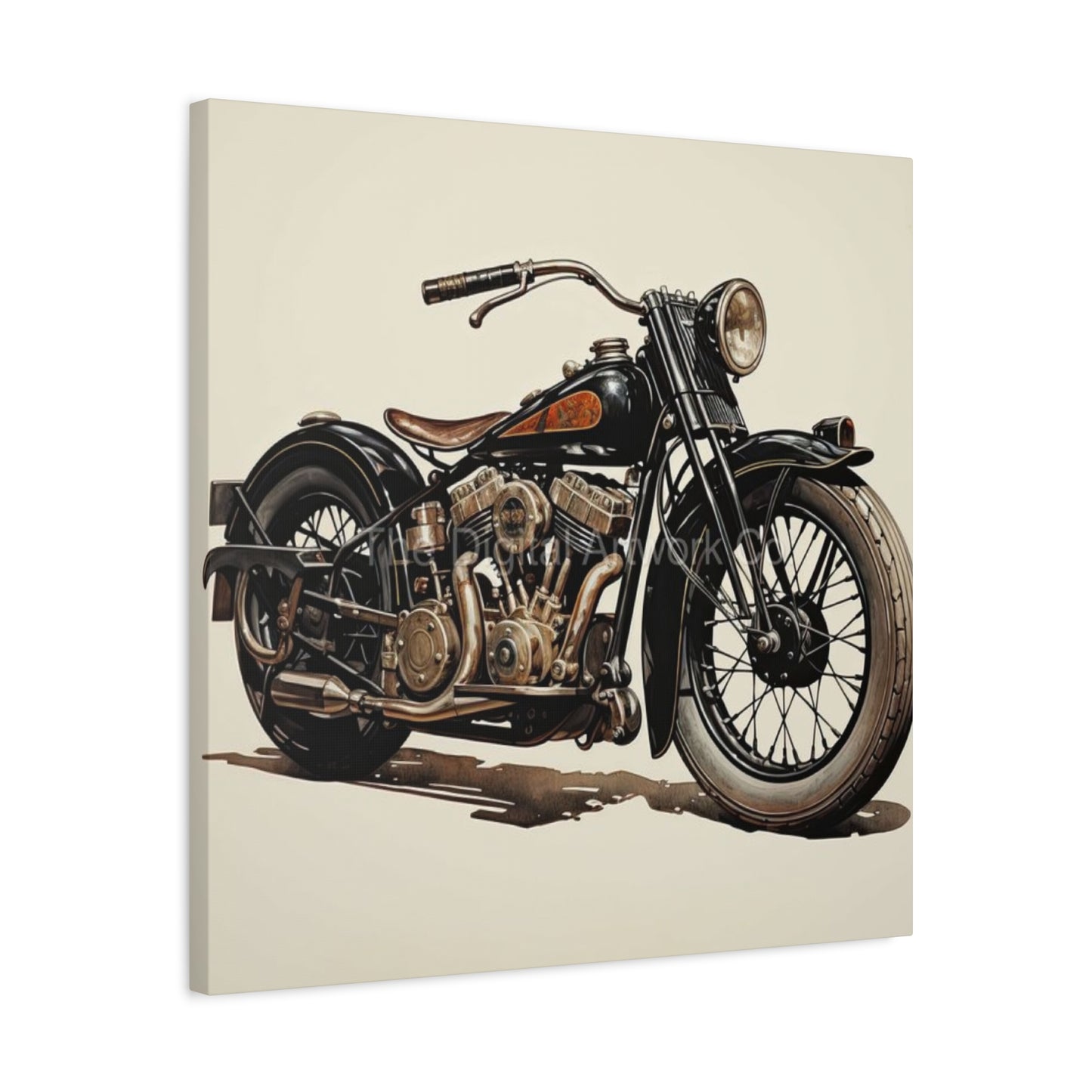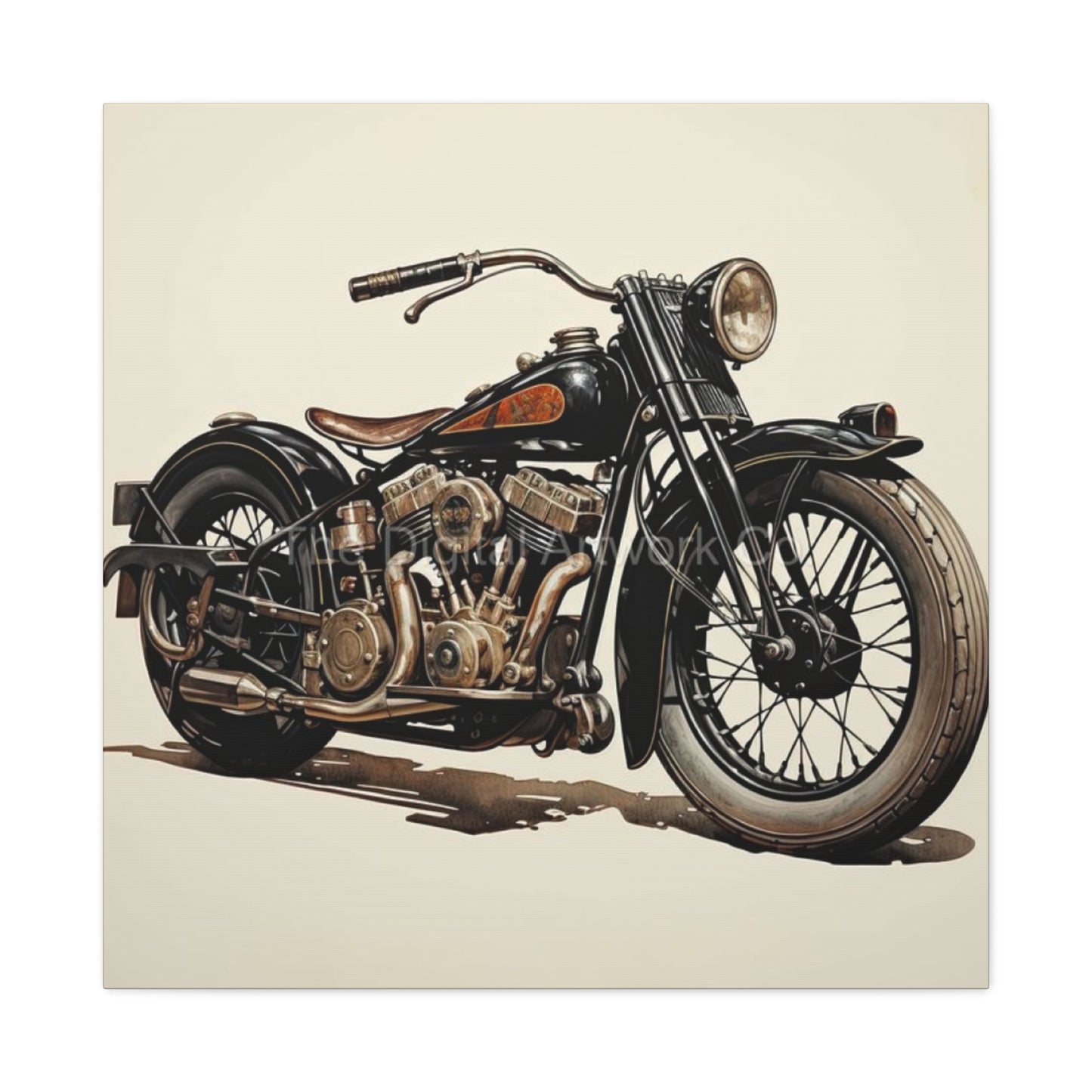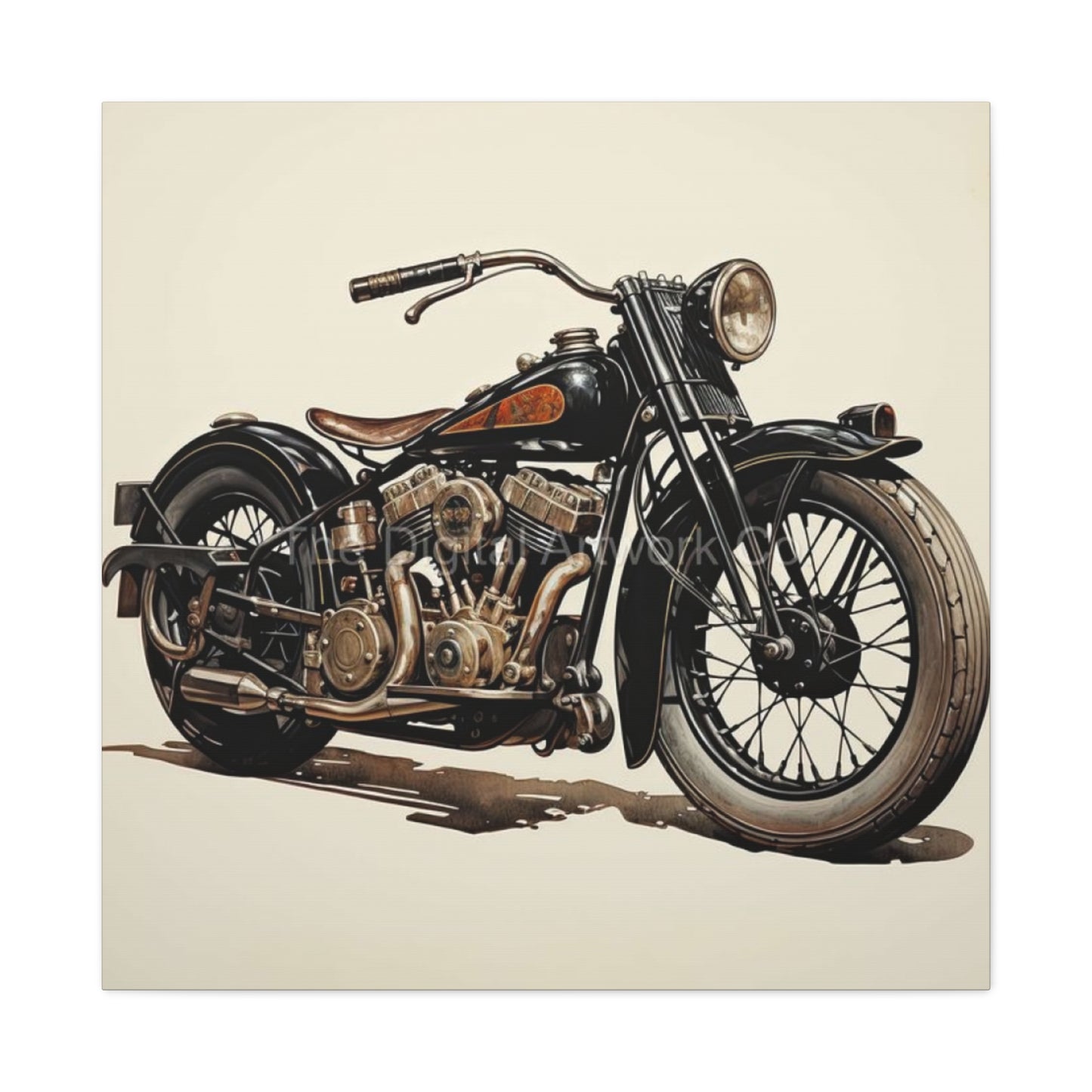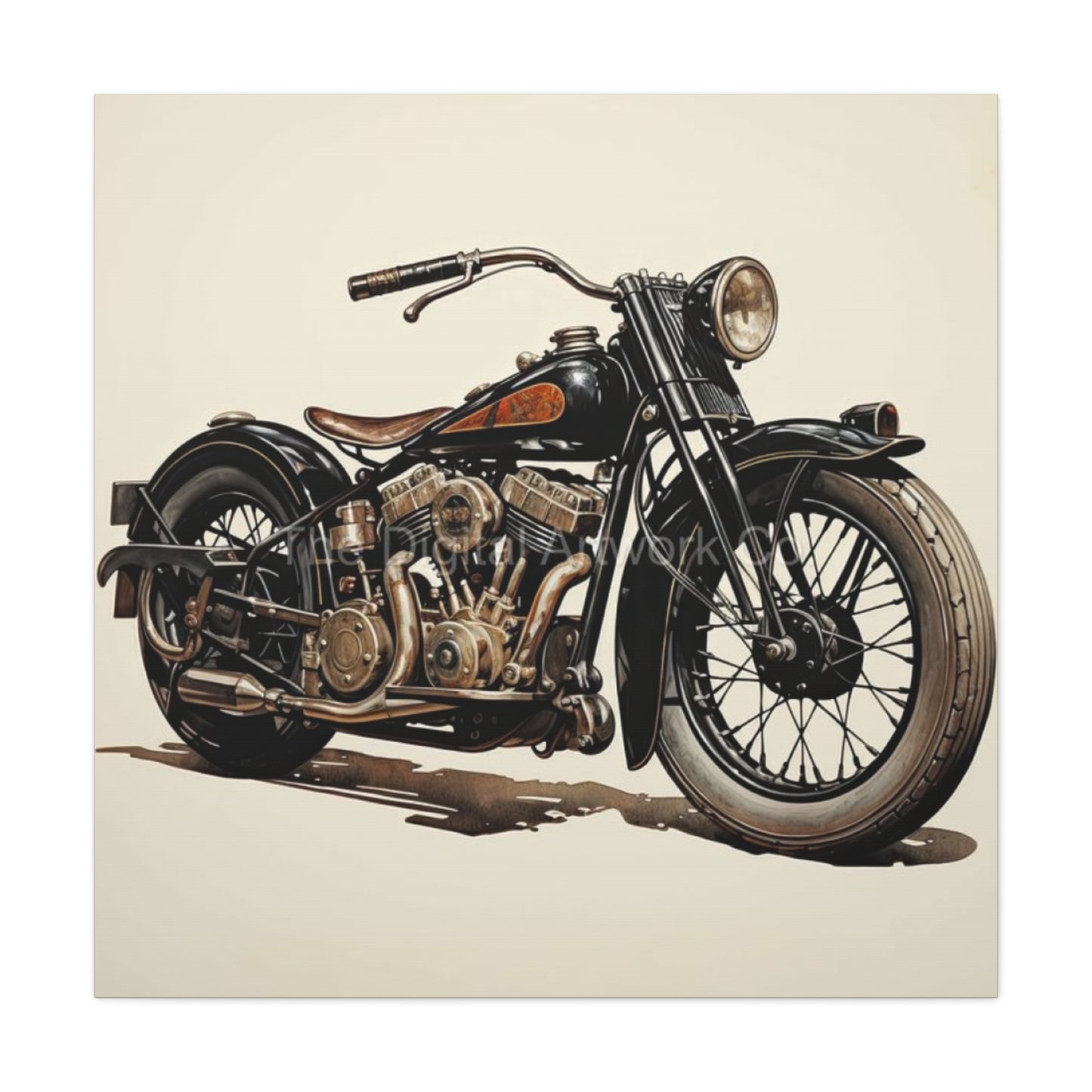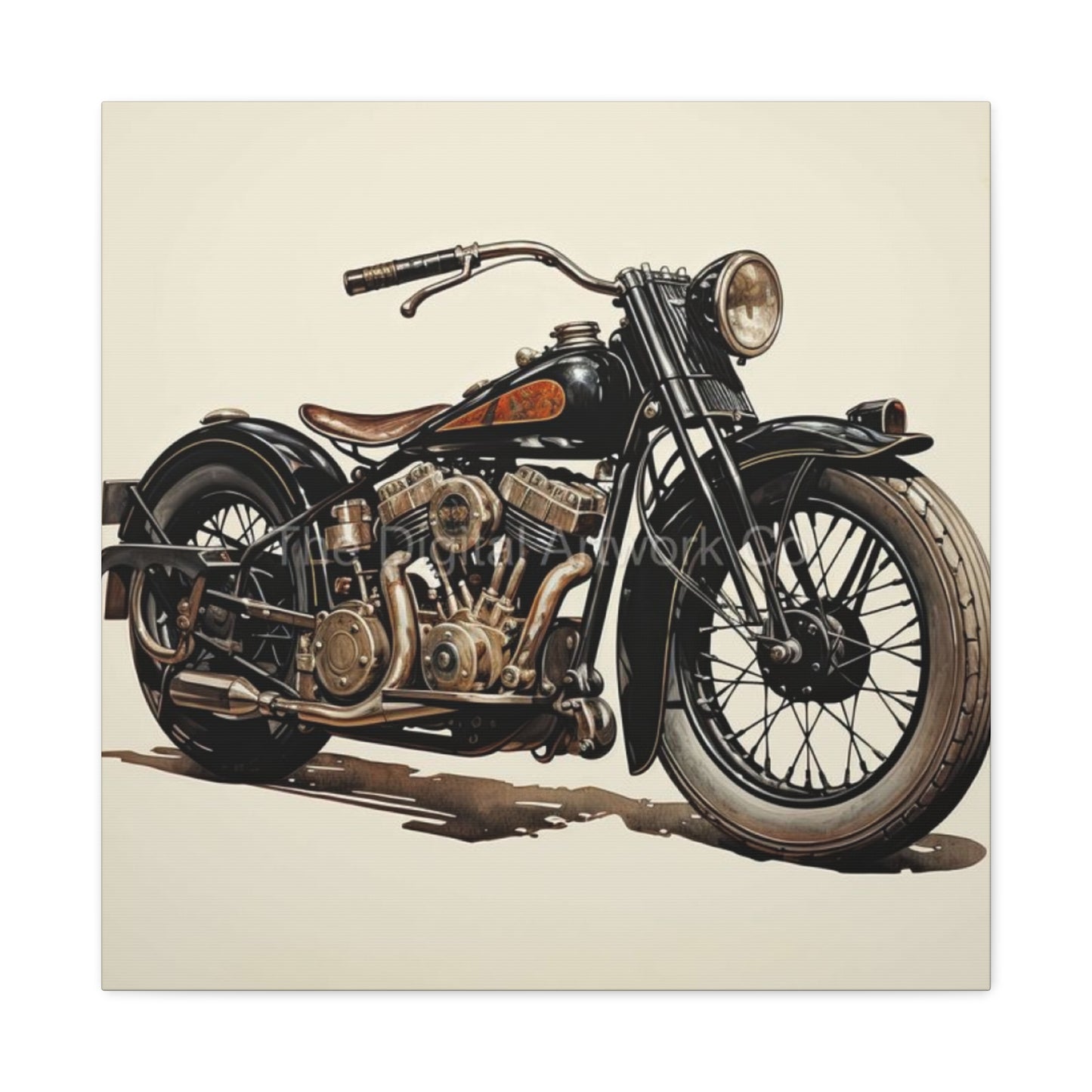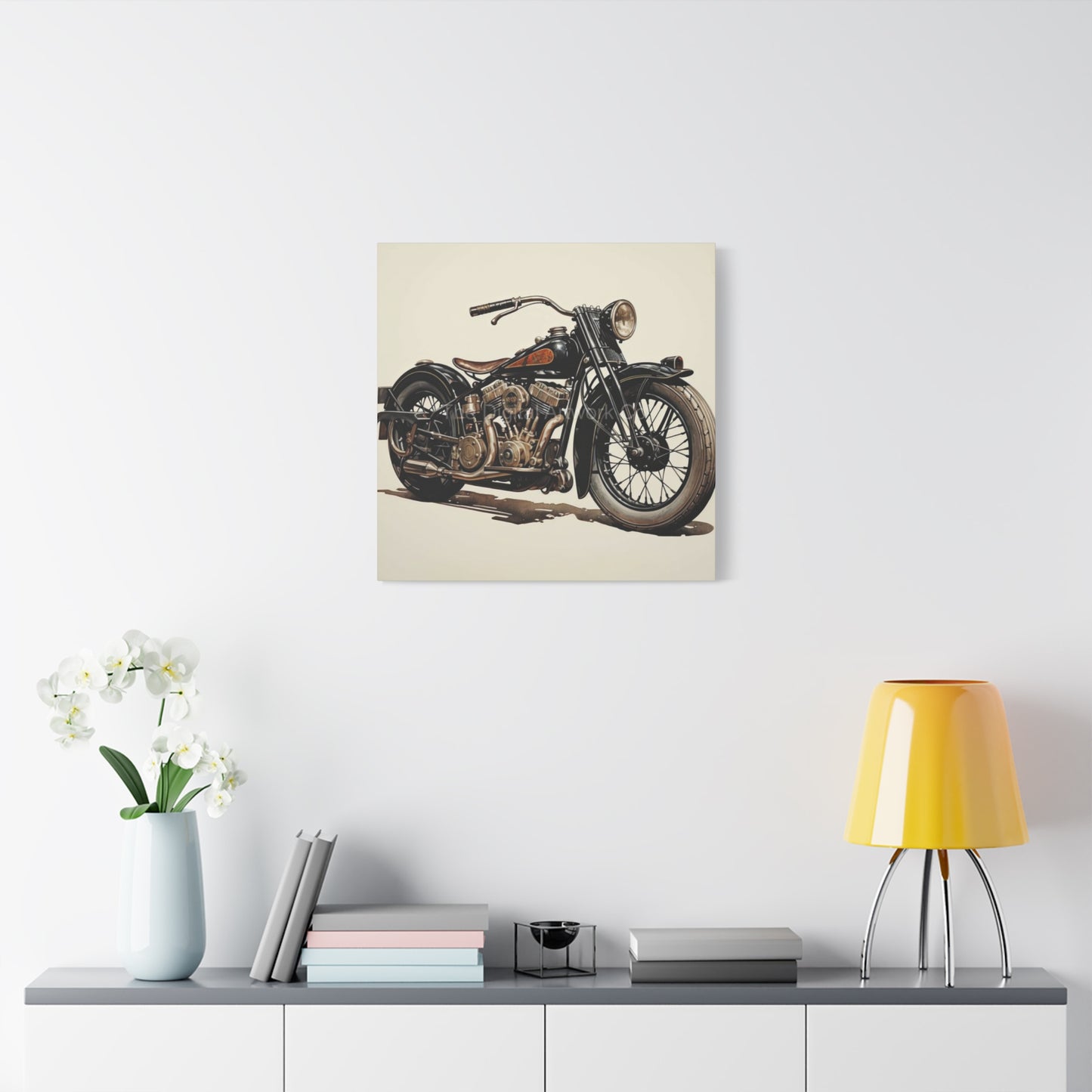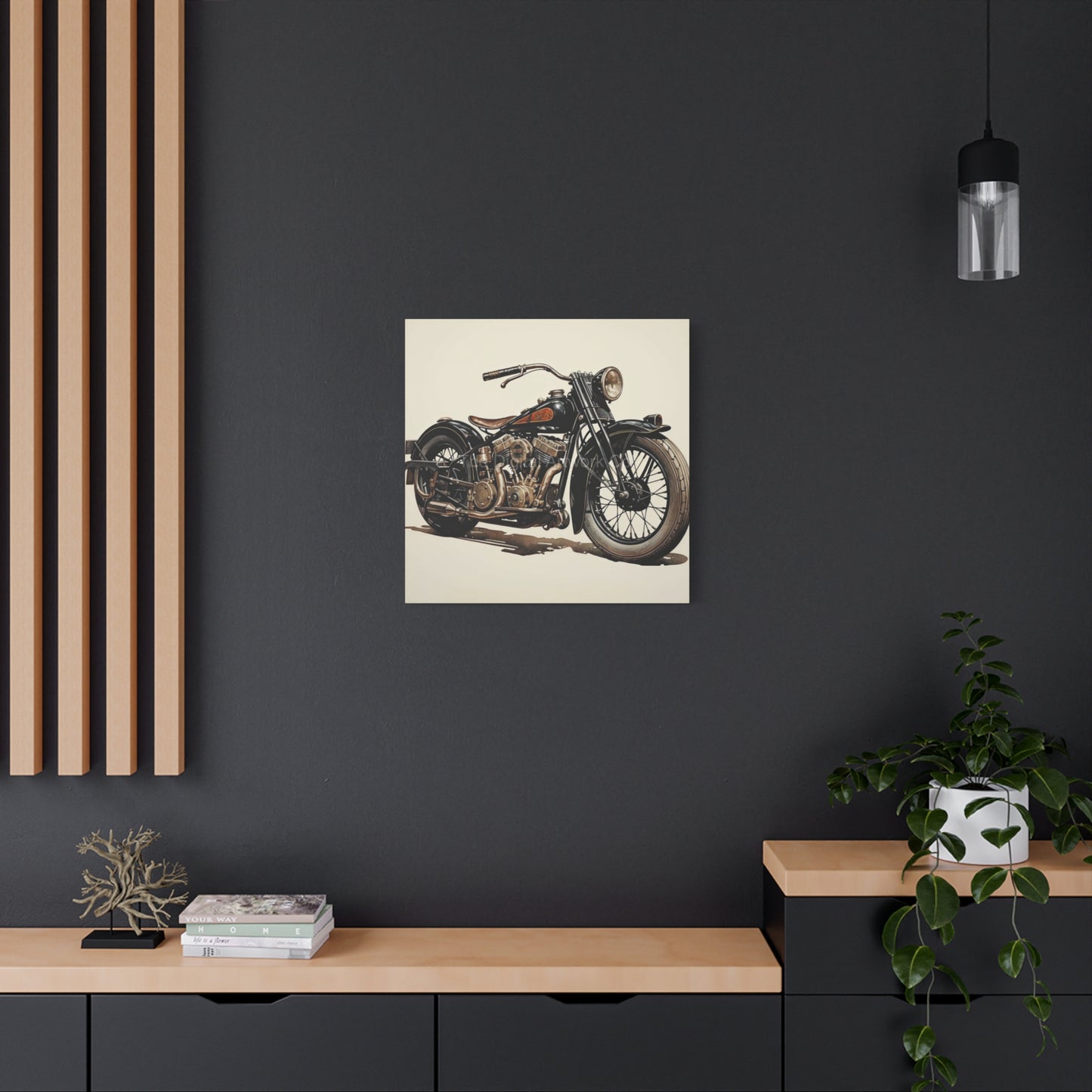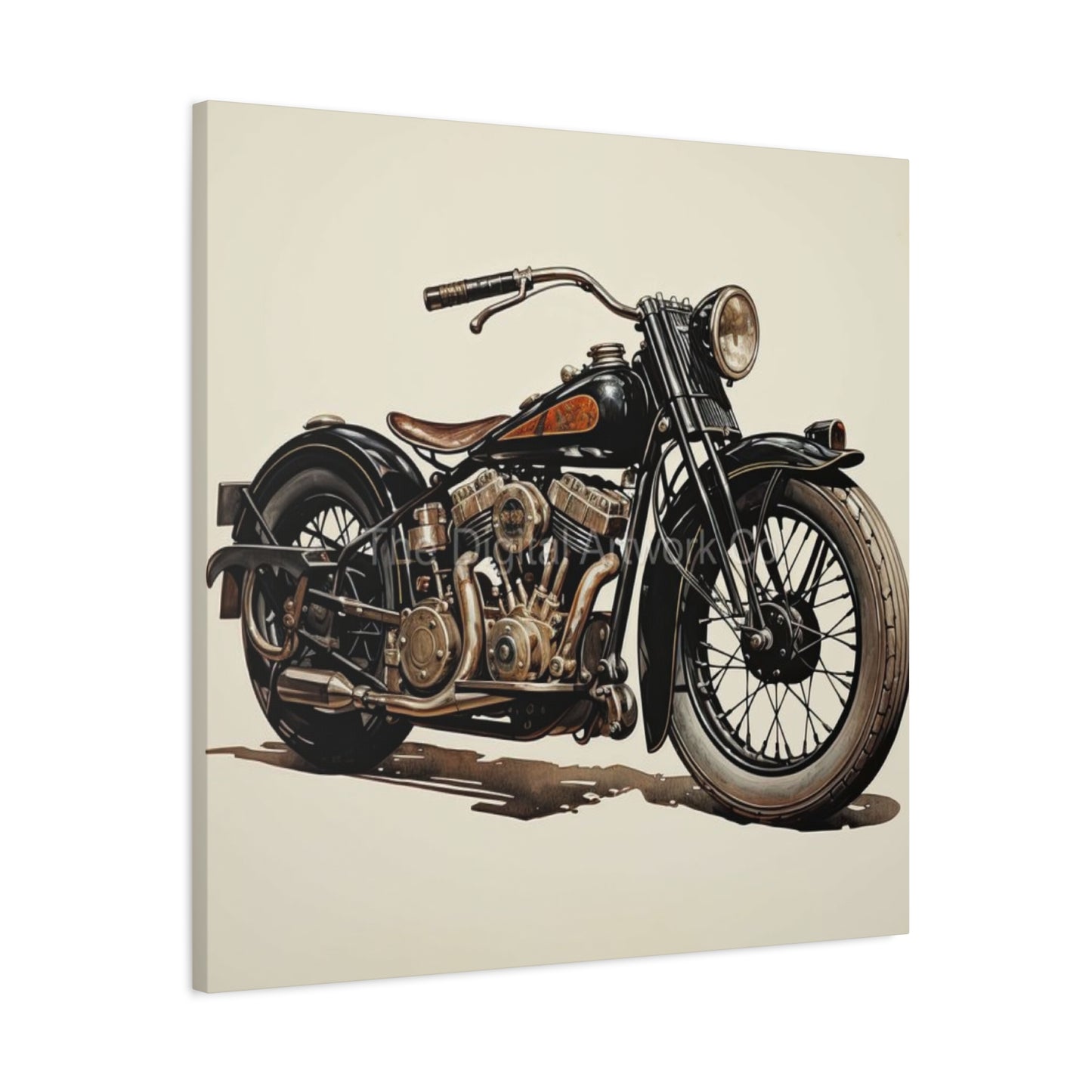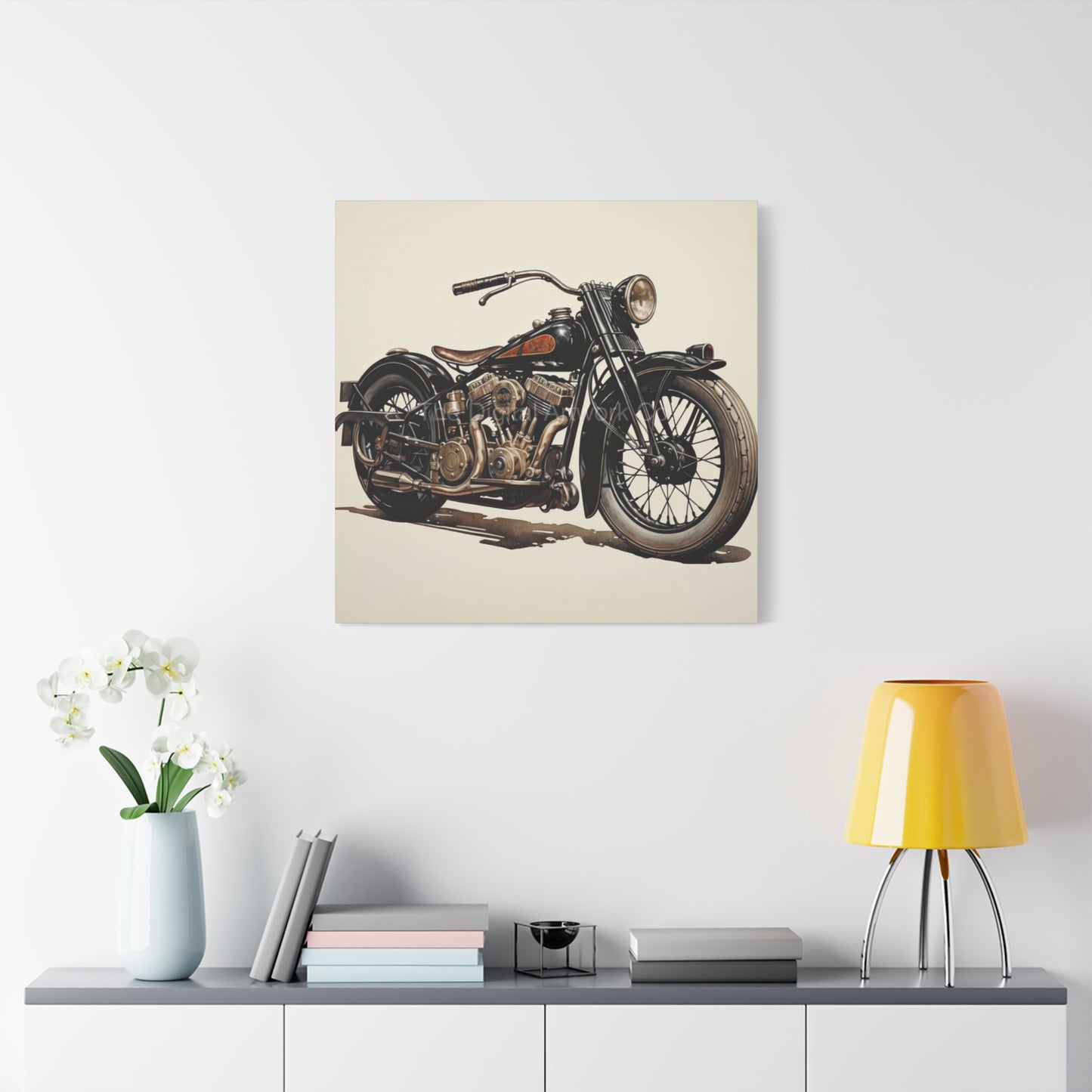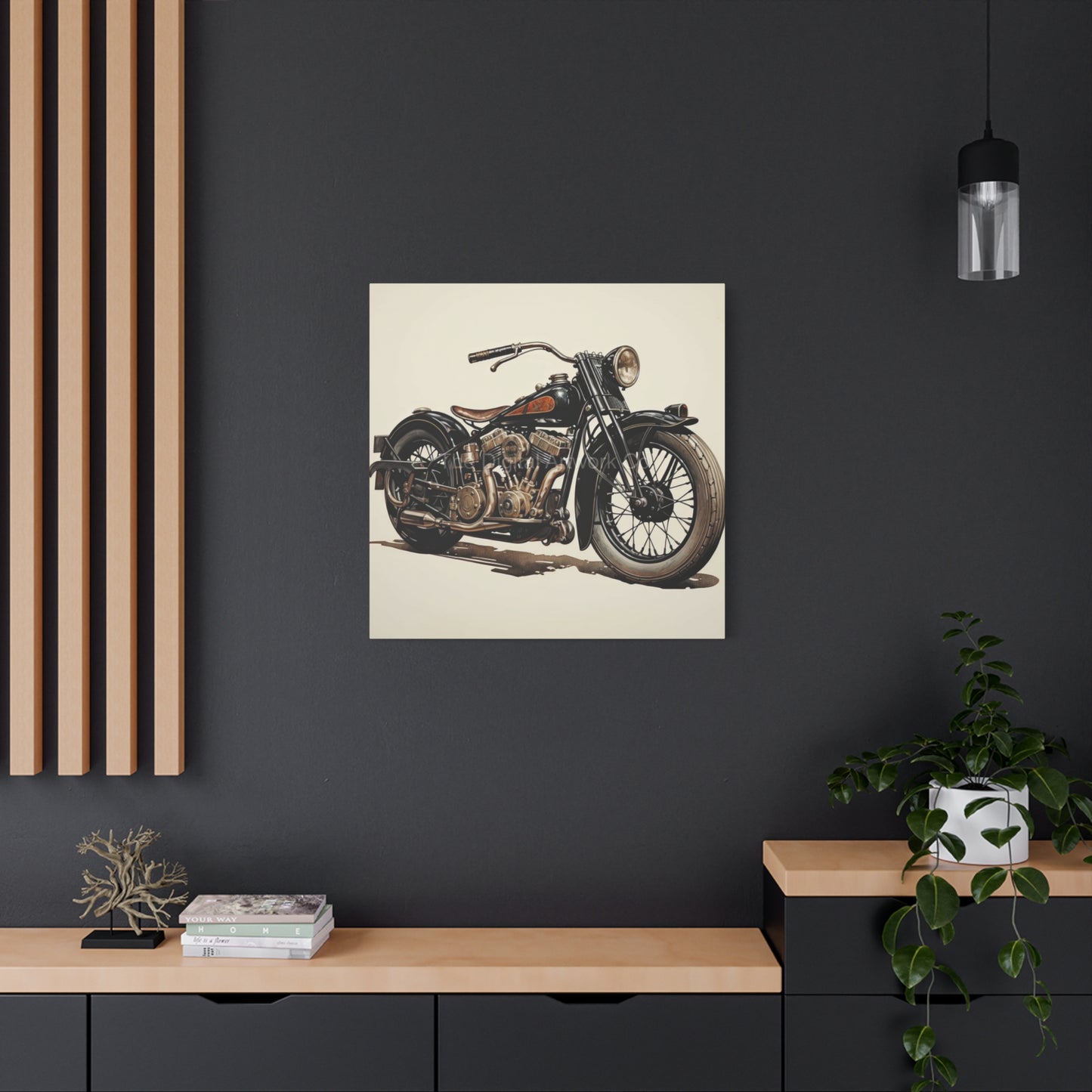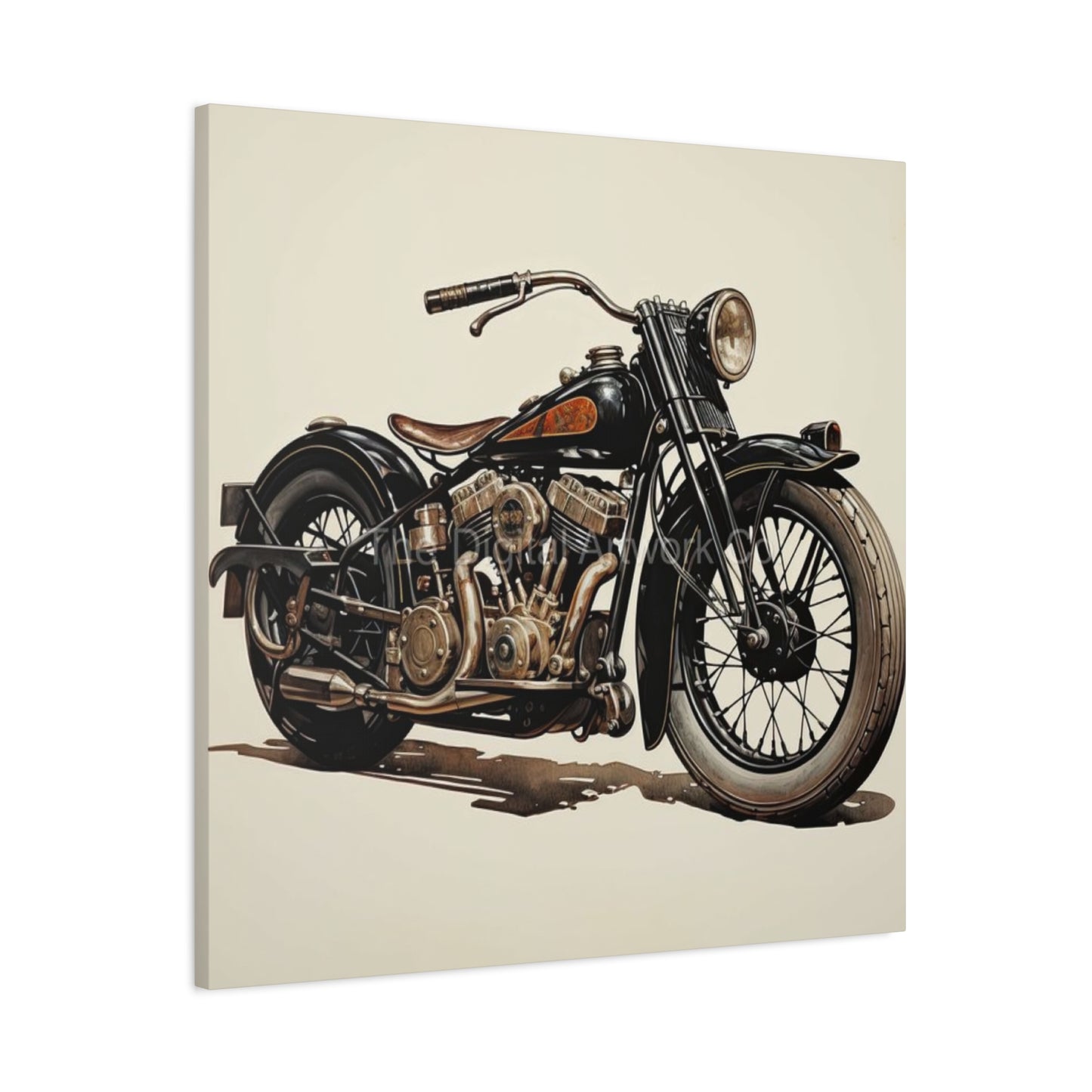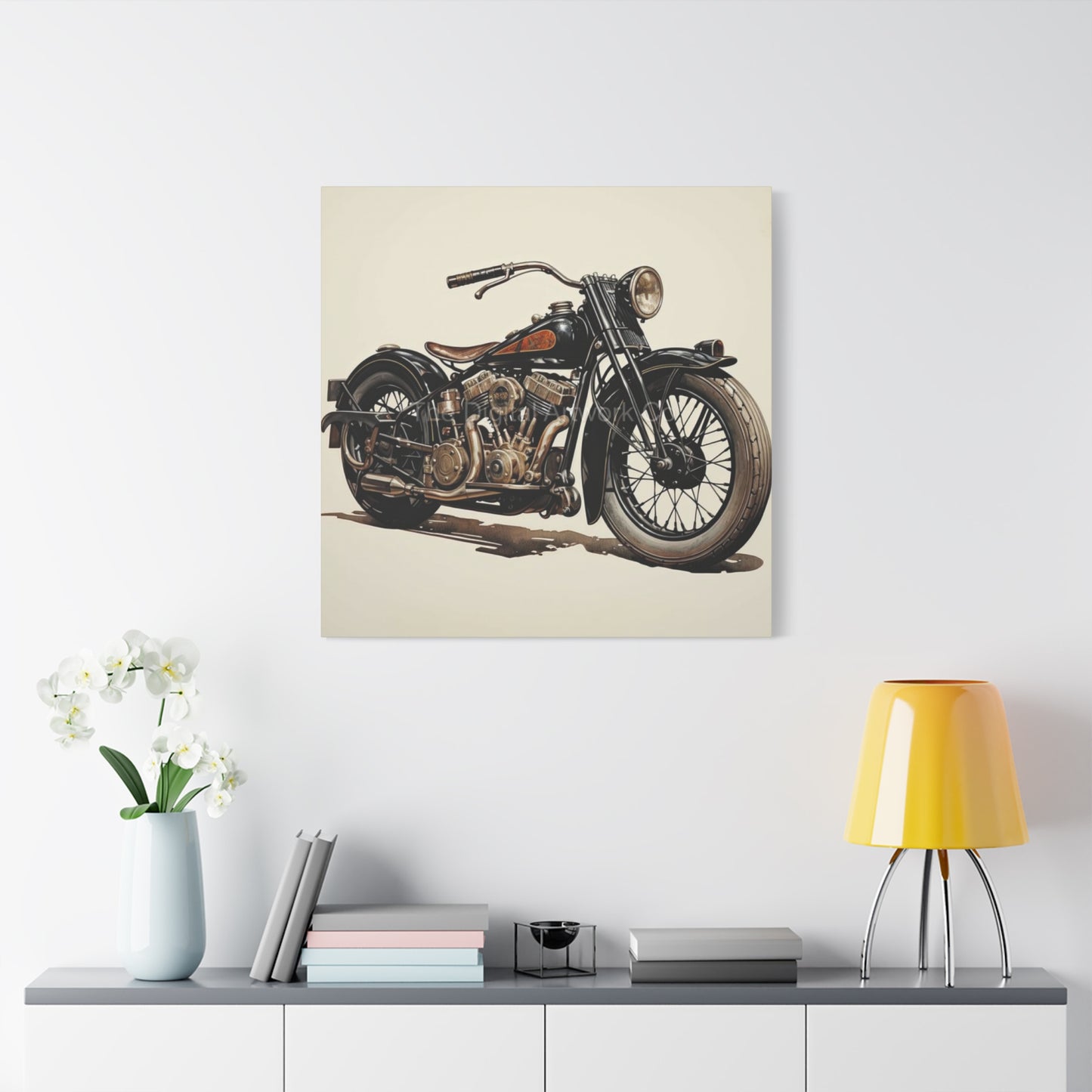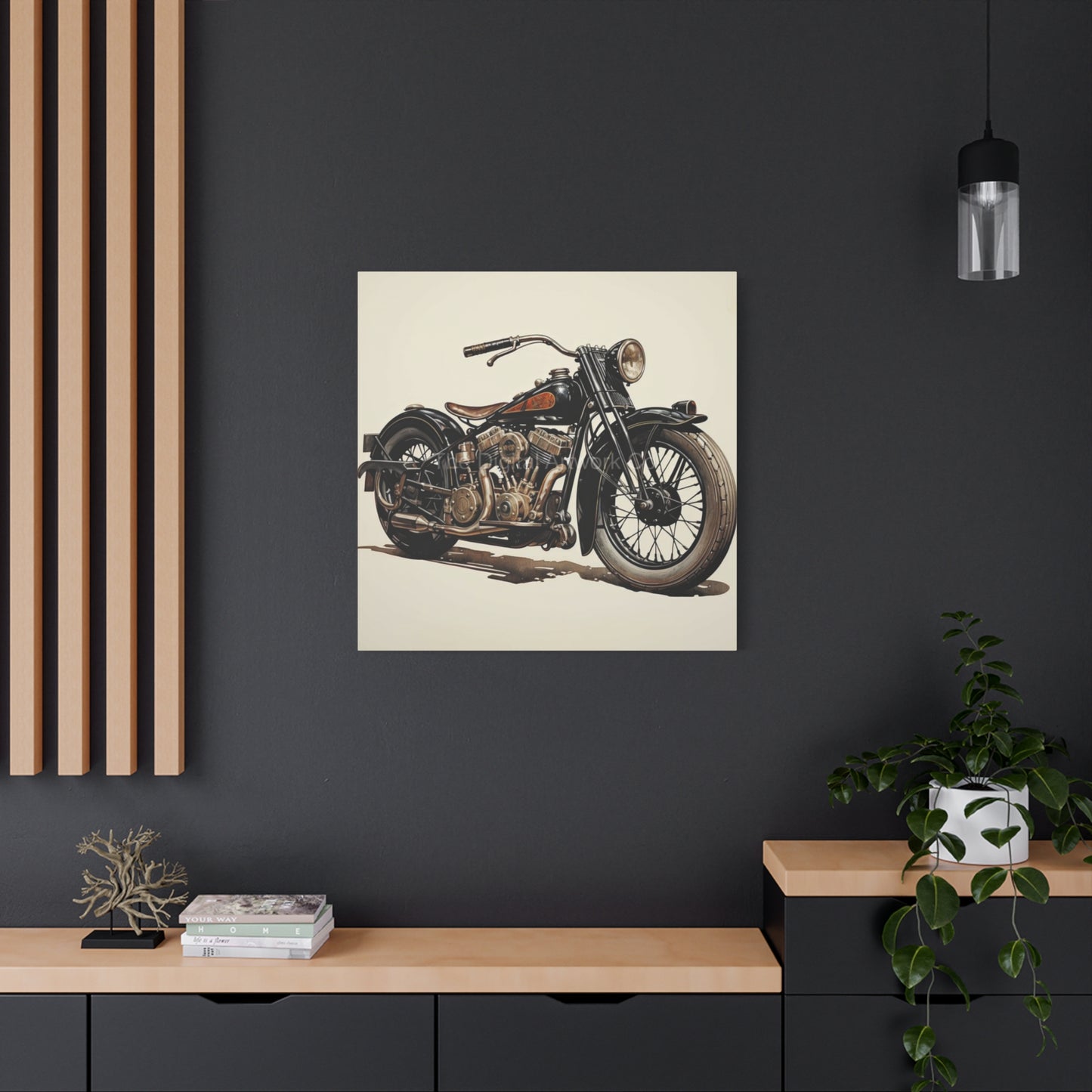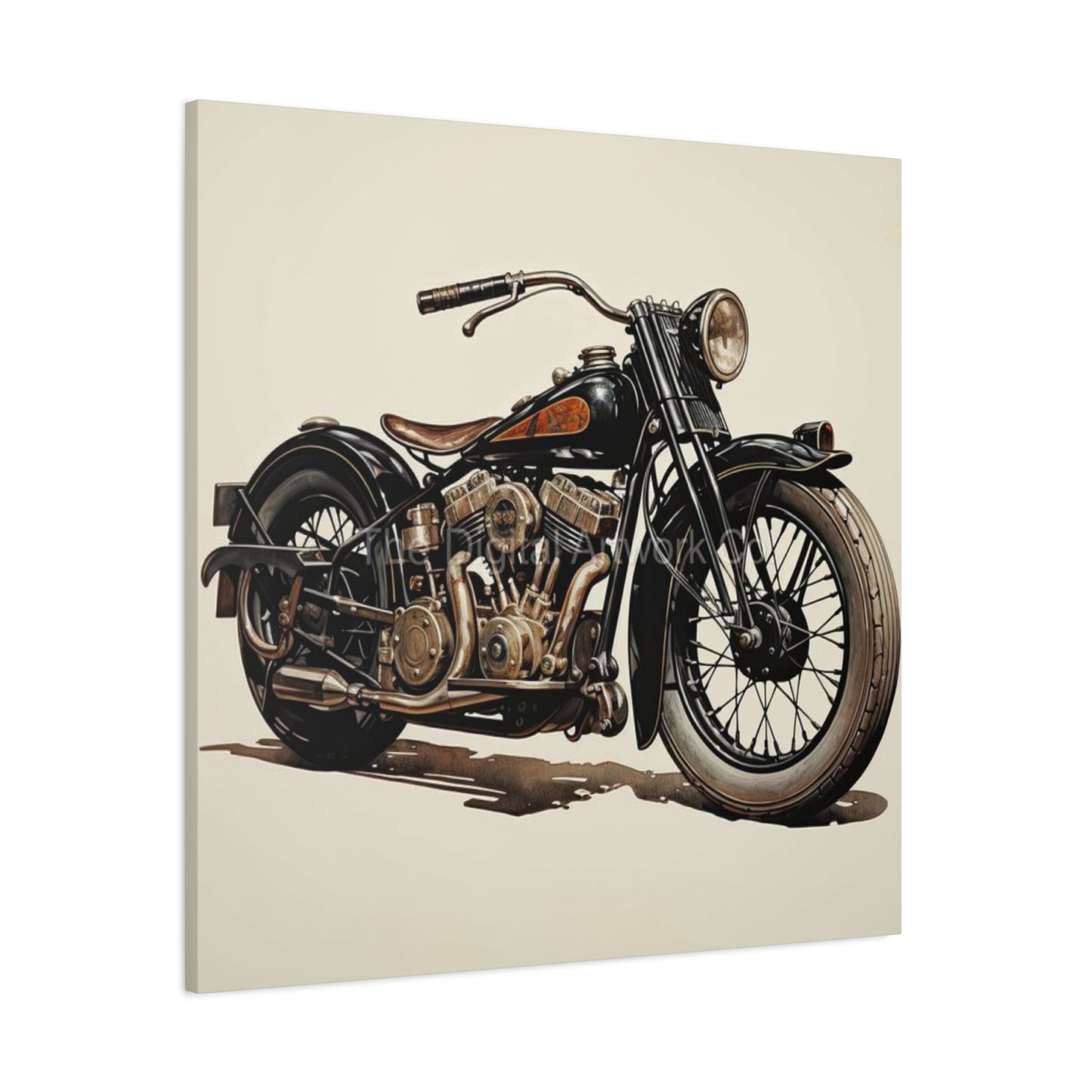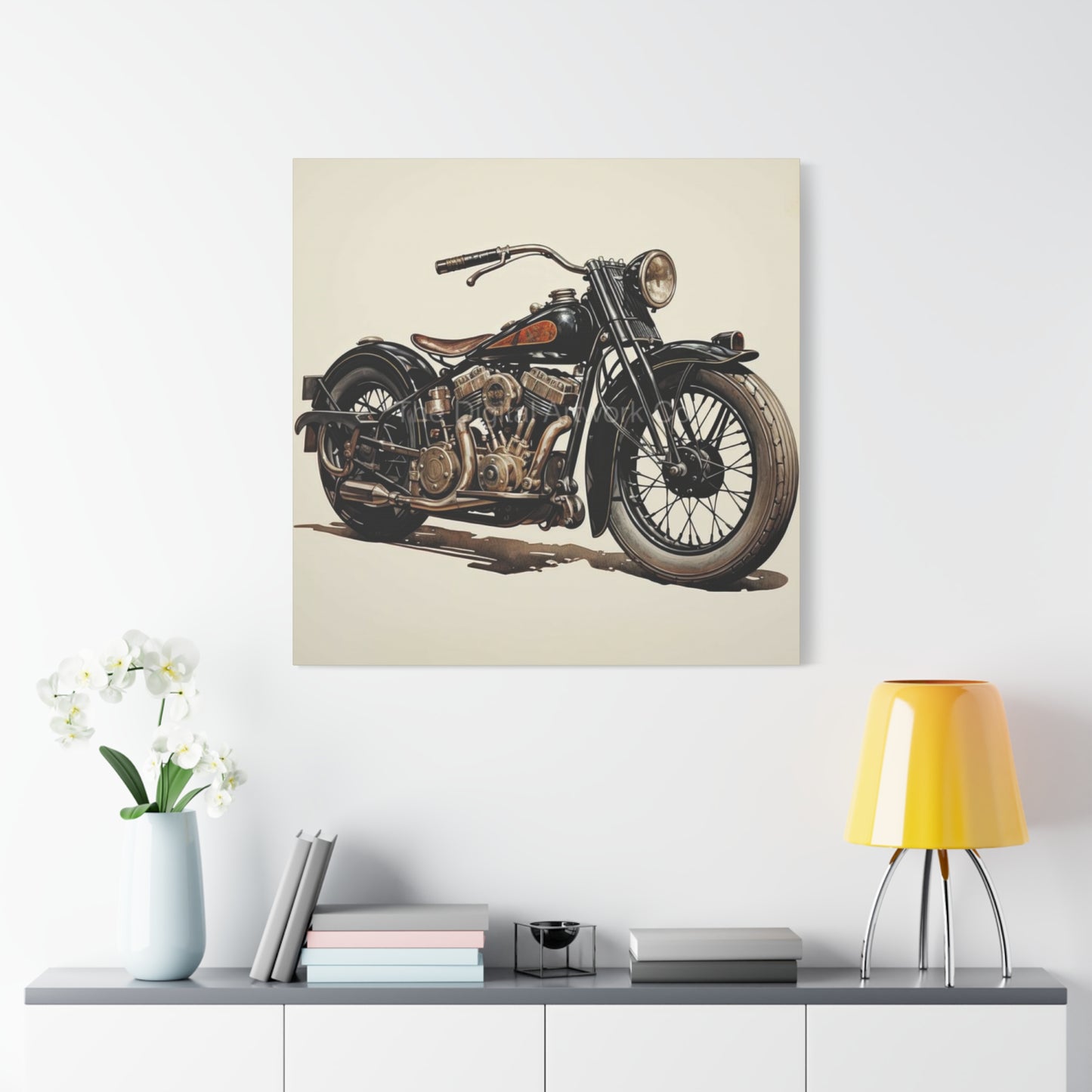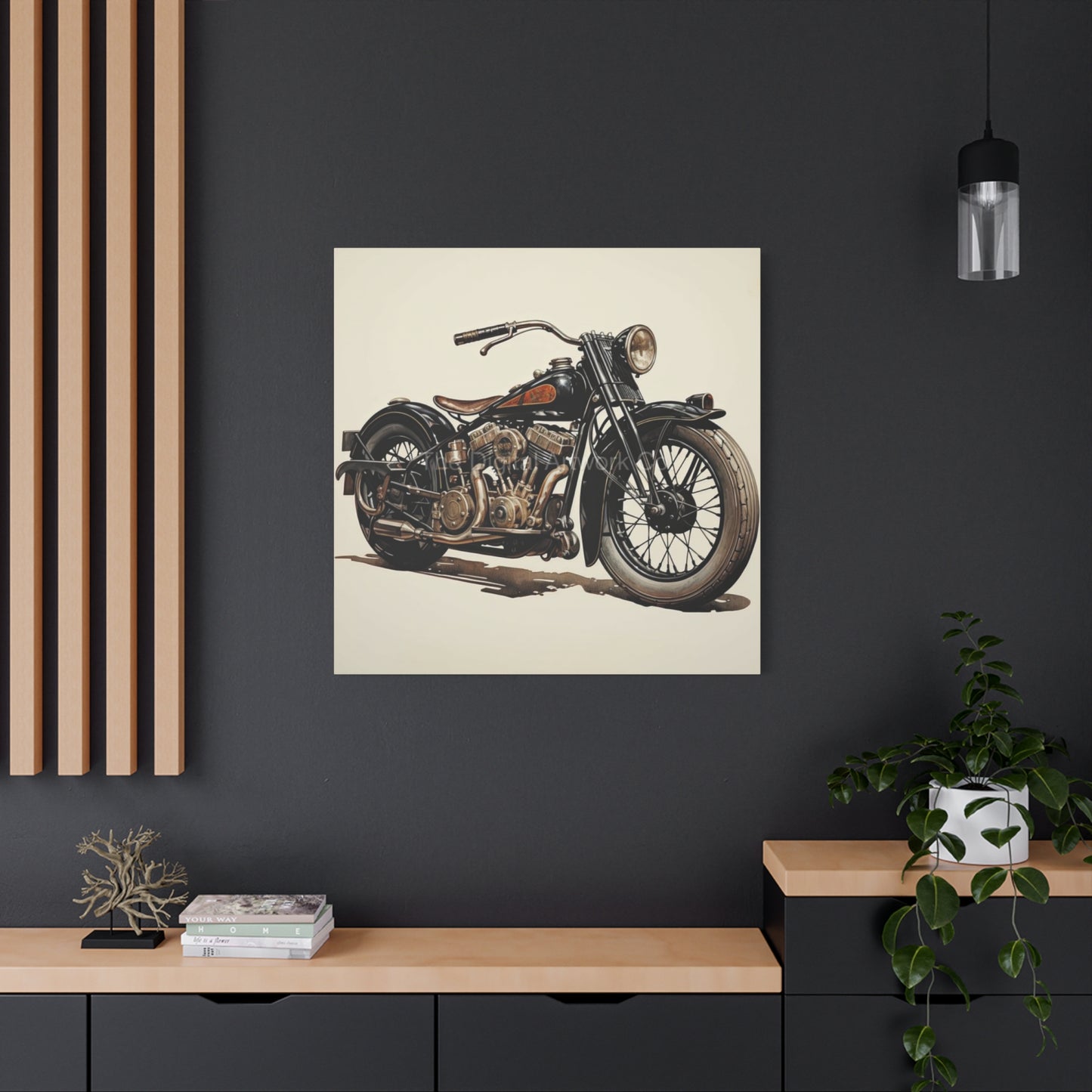Classic Twin Cylinder Motorcycle Wall Art: Creative Display Concepts for Your Home
Motorcycles have long captured the imagination of enthusiasts and casual admirers alike. The twin cylinder engine, with its distinctive sound and powerful performance, represents an iconic piece of mechanical engineering that has defined generations of riding culture. Bringing this passion into your living environment through artistic displays creates an atmosphere that celebrates both mechanical beauty and personal enthusiasm. Whether you're a dedicated rider or simply appreciate the aesthetic appeal of these magnificent machines, incorporating motorcycle-themed visual elements into your home transforms ordinary rooms into galleries that honor automotive heritage.
The appeal of twin cylinder motorcycles extends beyond their functional purpose. These machines embody freedom, adventure, and the craftsmanship of precision engineering. Their visual representation through various artistic mediums allows homeowners to showcase their appreciation for mechanical beauty while creating conversation pieces that reflect personal interests. From detailed engine renderings to action-packed riding scenes, the variety of available designs ensures that every enthusiast can find perfect pieces that resonate with their aesthetic preferences and complement existing furnishings.
This comprehensive guide explores sixteen distinct approaches to incorporating motorcycle imagery into your home. Each concept offers unique characteristics, styling opportunities, and placement strategies that help you create cohesive, visually engaging displays. Whether your taste leans toward nostalgic tributes to bygone eras, contemporary minimalist interpretations, or bold, colorful statements, these ideas provide the inspiration and practical guidance needed to transform your living areas into personalized galleries that celebrate your passion for twin cylinder motorcycles.
Vintage Motorcycle Wall Art Ideas
The vintage aesthetic has experienced remarkable popularity in recent years, and motorcycle enthusiasts have embraced this trend wholeheartedly. Vintage motorcycle imagery captures a golden era of mechanical design when motorcycles represented cutting-edge technology and unbridled freedom. These pieces typically feature motorcycles from the 1920s through the 1970s, showcasing models that have become legendary in automotive history. The weathered, aged appearance of vintage prints adds character and depth to any room, creating an atmosphere reminiscent of classic garages, old racing circuits, and the pioneering days of motorcycle culture.
When selecting vintage motorcycle pieces, consider the specific era that resonates most strongly with your personal taste. Early twentieth-century motorcycles featured distinctive designs with exposed engines, leather saddles, and minimal bodywork that highlighted the mechanical components. Mid-century models introduced more streamlined profiles, chrome accents, and distinctive tank shapes that have become instantly recognizable symbols of their era. The visual characteristics of each period offer different aesthetic qualities that can complement various decorating schemes.
The color palette of vintage motorcycle imagery typically includes muted tones, sepia effects, and faded appearances that simulate aged photographs or posters. These subdued colors integrate seamlessly with rustic, farmhouse, and traditional decorating schemes. The intentional wear and distressing often incorporated into vintage pieces adds authenticity and visual interest. Many vintage motorcycle prints feature additional elements such as period-appropriate typography, racing numbers, manufacturer logos, and geographic references that enhance the historical context and storytelling aspect of the artwork.
Authentic vintage motorcycle advertisements and promotional materials from the early and mid-twentieth century have become highly collectible. These original pieces feature distinctive graphic design aesthetics that reflect the commercial art styles of their respective eras. Reproductions of these classic advertisements allow enthusiasts to enjoy vintage aesthetics without the expense and rarity concerns associated with genuine period pieces. The advertising artwork often includes detailed illustrations of motorcycles alongside aspirational imagery and persuasive copy that captures the marketing approaches of different decades.
Creating a gallery arrangement with multiple vintage motorcycle pieces allows you to develop a comprehensive visual narrative about motorcycle evolution. Arranging prints chronologically demonstrates the progression of design and technology over time. Alternatively, focusing on a specific manufacturer or model type creates thematic cohesion that appeals to dedicated enthusiasts. The arrangement possibilities are virtually limitless, allowing you to customize your display to reflect your specific interests and available placement areas.
Framing choices significantly impact the overall presentation of vintage motorcycle imagery. Distressed wood frames with visible grain and imperfections complement the aged aesthetic of vintage prints. Metal frames with bronze, brass, or aged steel finishes enhance the industrial character inherent in motorcycle subjects. Consider frames with substantial depth that create shadow boxes, adding dimensional interest and drawing attention to the displayed imagery. The matting choices also contribute to the vintage appearance, with aged or cream-colored materials often working better than bright white options.
Placement strategies for vintage motorcycle pieces should consider the overall atmosphere you wish to create. Traditional placement above seating arrangements or fireplace mantels works well for formal presentations. More casual arrangements in garages, workshops, or recreational rooms allow for creative groupings and asymmetrical layouts that feel organic and personal. Vintage motorcycle imagery particularly suits rooms with exposed brick, reclaimed wood, leather furniture, and metal fixtures that reinforce the historical aesthetic.
Lighting considerations enhance the vintage character of motorcycle displays. Warm-toned lighting complements the aged appearance of vintage prints and creates inviting atmospheres. Avoid harsh, cool-toned lighting that can clash with the warm color palettes typical of vintage imagery. Consider accent lighting with vintage-inspired fixtures such as Edison bulbs, industrial cage lights, or brass picture lights that reinforce the historical theme while ensuring adequate illumination for viewing the displayed artwork.
The scale of vintage motorcycle prints should correspond to the viewing distance and available placement area. Large-scale prints work exceptionally well as focal points in ample rooms where viewers can appreciate the details from various distances. Smaller prints suit intimate settings and work beautifully when arranged in collections. Consider the proportions of your furniture and architectural features when selecting print sizes to ensure balanced, harmonious compositions that feel intentional rather than haphazard.
Protecting vintage-style prints ensures their longevity and maintains their appearance over time. UV-resistant glazing prevents fading and degradation caused by sunlight exposure, particularly important for pieces displayed in rooms with substantial natural light. Regular dusting prevents accumulation that can dull the appearance of prints. Avoid hanging vintage motorcycle imagery in areas with high humidity or direct heat sources that can cause warping, fading, or other deterioration over time.
Iconic Twin Cylinder Bike Posters
Twin cylinder engines represent one of the most significant configurations in motorcycle history. The parallel twin, V-twin, and flat twin arrangements each offer distinctive characteristics that have defined countless legendary motorcycles. Posters celebrating these iconic machines provide opportunities to showcase specific models that hold personal significance or represent important milestones in automotive design. These displays typically feature detailed renderings or photographs of complete motorcycles, highlighting the distinctive profiles, proportions, and design elements that make particular models instantly recognizable.
British parallel twin motorcycles from manufacturers who dominated the market during the 1950s and 1960s have become particularly popular subjects for enthusiast displays. These machines featured distinctive vertical twin cylinder configurations with separate cylinder heads and characteristic exhaust notes that became synonymous with British motorcycles. The classic lines, chrome tanks, and minimalist bodywork of these models photograph beautifully and translate exceptionally well into poster presentations. Many enthusiasts particularly appreciate blueprints or technical drawings that reveal the engineering sophistication beneath the elegant exteriors.
American V-twin motorcycles represent another category of iconic twin cylinder machines that inspire passionate followings. The distinctive V-configuration creates a characteristic engine profile and produces the legendary rumble that enthusiasts immediately recognize. Posters featuring these machines often emphasize their muscular proportions, extensive chrome detailing, and commanding presence. The cultural significance of American V-twins extends beyond mechanical specifications to encompass lifestyle associations, making these images particularly resonant for enthusiasts who identify with the freedom and individualism these motorcycles represent.
European flat twin motorcycles offer yet another distinctive configuration with horizontally opposed cylinders that create unique visual characteristics and handling properties. These machines feature sophisticated engineering and distinctive aesthetics that appeal to enthusiasts who appreciate technical innovation and refined performance. Posters showcasing flat twin motorcycles often highlight the distinctive engine profile, shaft drive systems, and touring-oriented designs that characterize these models. The loyal following these motorcycles enjoy ensures continued interest in visual representations that celebrate their unique qualities.
Racing versions of twin cylinder motorcycles provide exciting subjects for poster presentations. Historic racing machines feature stripped-down profiles, competition numbers, sponsor decals, and specialized components that differentiate them from street-going counterparts. Action photography from famous races, featuring motorcycles leaned over in corners or accelerating down straights, captures the excitement and competitive spirit of motorcycle racing. These dynamic images work particularly well in rooms dedicated to active pursuits or viewing racing broadcasts.
Custom and modified twin cylinder motorcycles represent personal expression and craftsmanship that extends beyond factory specifications. Cafe racers, bobbers, choppers, and other custom styles reimagine production motorcycles according to individual visions. Posters featuring custom builds celebrate creativity and craftsmanship while showcasing the versatility of twin cylinder platforms. These images appeal to enthusiasts who appreciate the modification culture and view motorcycles as canvases for personal expression rather than simply transportation devices.
Technical cutaway illustrations revealing the internal components of twin cylinder engines provide educational and aesthetic value. These detailed renderings show the relationship between pistons, crankshafts, valvetrain components, and lubrication systems in ways that photographs cannot capture. For mechanically inclined enthusiasts, these technical illustrations satisfy curiosity about how these engines function while creating visually striking displays that combine scientific precision with artistic presentation. The complexity revealed in cutaway illustrations demonstrates the sophistication of even seemingly simple twin cylinder configurations.
Limited edition and artist-signed posters featuring twin cylinder motorcycles have become collectible items that appreciate in value over time. Many talented artists specialize in automotive subjects, creating original works that reinterpret classic motorcycles through distinctive artistic styles. These limited releases often feature superior printing quality, premium materials, and authentication that distinguishes them from mass-produced alternatives. For serious collectors, acquiring numbered, signed prints provides both aesthetic enjoyment and potential investment value.
The presentation quality of motorcycle posters depends significantly on printing methods and materials. High-quality digital printing on archival paper ensures color accuracy, detail preservation, and longevity. Giclée printing techniques produce museum-quality results that rival traditional printing methods. The paper selection influences the final appearance, with matte papers reducing glare and preserving subtle details while glossy papers enhance color saturation and visual impact. Consider the viewing conditions and personal preferences when selecting printing specifications.
Poster sizing considerations balance impact with available placement options. Standard poster dimensions simplify framing and display, while custom sizing allows perfect integration with specific locations. Oversized posters create dramatic focal points that command attention and anchor room designs. Smaller posters work well in collections or tight locations where larger formats would overwhelm available areas. Consider creating a uniform sizing scheme when planning multiple-poster displays to establish visual coherence and professional presentation quality.
Rustic Decor with Classic Motorcycles
Rustic decorating aesthetics embrace natural materials, weathered finishes, and organic textures that create warm, inviting environments. Classic motorcycles complement rustic sensibilities through their mechanical authenticity, historical character, and association with craftsmanship. Combining motorcycle imagery with rustic decorating elements produces cohesive schemes that honor both natural and mechanical beauty. This approach works exceptionally well in mountain homes, lakeside retreats, converted barns, and urban lofts where industrial and natural elements coexist comfortably.
The material relationships between rustic furnishings and motorcycle subjects create natural harmony. Reclaimed wood tables, exposed beam ceilings, and plank floors provide textural backdrops that complement the metal and rubber components of motorcycles. Leather upholstery and accessories echo the saddles, grips, and protective gear associated with riding. Stone fireplaces and masonry elements reference the roads and landscapes where motorcycles provide transportation and recreation. These material connections create intuitive relationships that make motorcycle imagery feel integrated rather than imposed.
Color palettes in rustic environments typically feature earth tones, aged metals, and natural wood shades that work beautifully with motorcycle subjects. Sepia-toned or black and white motorcycle imagery integrates seamlessly with neutral rustic schemes. When incorporating color, consider the warm browns of leather, the silvery patina of aged aluminum, the deep blues of vintage motorcycle tanks, and the rich reds of classic paint schemes. These colors reference both natural and mechanical subjects, creating bridges that unify seemingly disparate elements.
Mounting and framing techniques for rustic presentations should reinforce the natural, handcrafted aesthetic. Barnwood frames with visible knots, grain patterns, and weathering complement both the rustic environment and the vintage character of classic motorcycle imagery. Frames constructed from reclaimed materials add authenticity and environmental consciousness to displays. Simple, substantial frames without ornate moldings maintain the straightforward, honest character appropriate to rustic aesthetics. Consider frames with natural edge details or visible joinery that celebrates woodworking craftsmanship.
Three-dimensional elements enhance rustic motorcycle displays by adding tactile interest and functional components. Motorcycle parts such as headlights, instruments, or engine components mounted alongside photographic displays create conversation pieces that engage multiple senses. Vintage tools, riding goggles, or leather goods arranged with motorcycle imagery develop thematic cohesion while adding dimensional variety to otherwise flat presentations. These curated collections transform simple displays into personal museums that tell stories about riding culture and mechanical appreciation.
Rustic environments often feature open shelving, ledges, and mantels that provide opportunities for layered motorcycle displays. Rather than simply hanging framed prints, consider creating vignettes that combine imagery with related objects. Stack vintage motorcycle manuals beneath framed photographs, arrange model motorcycles alongside prints, or display riding memorabilia that provides context and personal narrative. These layered presentations feel organic and evolved rather than formally designed, appropriate to rustic sensibilities that value authenticity over perfection.
Lighting in rustic environments should feel warm, ambient, and natural rather than harsh or clinical. Incorporate warm-toned Edison bulbs, vintage industrial fixtures, or simple metal shades that provide functional illumination without stylistic conflict. Consider accent lighting for motorcycle displays using adjustable fixtures that allow highlighting specific pieces while maintaining overall atmospheric lighting. Natural lighting through windows complements rustic aesthetics but requires UV protection for displayed motorcycle imagery to prevent fading and deterioration.
Architectural elements in rustic environments provide natural placement opportunities for motorcycle displays. Exposed beams offer locations for hanging arrangements that don't require traditional positioning. Brick or stone accent sections create textural backdrops that enhance the industrial character of motorcycle subjects. Salvaged doors, shutters, or architectural fragments can become mounting surfaces for motorcycle prints, adding additional layers of history and texture to presentations. These creative placement strategies embrace the informal, collected-over-time character appropriate to rustic aesthetics.
Scale relationships in rustic environments typically favor substantial, bold presentations rather than delicate, refined approaches. Large-format motorcycle prints hold their own against heavy timber beams, substantial furniture, and generous room proportions common in rustic designs. When working with collections of smaller prints, substantial frames and generous matting prevent pieces from appearing insignificant against robust architectural elements. The goal is achieving visual weight that corresponds to the solid, grounded character of rustic environments.
Balancing masculine motorcycle subjects with softening elements prevents rustic rooms from feeling overly industrial or harsh. Incorporate textiles such as wool blankets, woven rugs, or linen upholstery that provide visual and tactile softness. Living plants in simple containers add organic elements that complement both natural materials and mechanical subjects. Consider the overall balance of hard and soft, rough and smooth, natural and manufactured elements to create environments that feel complete rather than one-dimensional.
Black & White Twin Cylinder Art
Black and white photography and illustrations offer timeless aesthetic qualities that transcend trends and complement diverse decorating schemes. The elimination of color focuses attention on form, composition, contrast, and texture, often revealing details and relationships obscured by color complexity. Twin cylinder motorcycles translate exceptionally well into monochromatic presentations, with their mechanical details, chrome accents, and sculptural forms creating dramatic subjects for black and white treatment. This approach suits both traditional and contemporary environments, offering versatility that colored alternatives cannot match.
The contrast inherent in motorcycle subjects makes them particularly effective for black and white presentation. Shiny chrome components reflect light dramatically against matte painted surfaces and dark rubber tires. Engine fins, spokes, and mechanical details create complex patterns that photograph beautifully in monochrome. The interplay of highlights and shadows reveals dimensional qualities and emphasizes the sculptural nature of motorcycle design. These visual characteristics ensure that black and white motorcycle imagery maintains visual interest despite the absence of color information.
Different black and white treatments produce distinct aesthetic results. High-contrast presentations with deep blacks and bright whites create bold, graphic images with maximum impact. These treatments work particularly well for contemporary environments and modern decorating schemes that embrace strong visual statements. Lower-contrast approaches with expanded gray scales produce subtle, nuanced images that reveal gradual tonal transitions and delicate details. These softer treatments suit traditional environments and complement existing artwork with similar tonal ranges.
Grain structure in black and white photography contributes significantly to the overall character and mood. Fine-grain images with smooth tonal gradations feel contemporary, precise, and detailed. These technical qualities appeal to viewers who appreciate clarity and resolution. Visible grain structure creates nostalgic qualities reminiscent of film photography and historical images. The texture introduced by grain adds visual interest and can help integrate modern prints with genuinely vintage pieces. Consider the grain characteristics when selecting black and white motorcycle imagery to ensure consistency with your intended aesthetic.
Subject selection for black and white motorcycle presentations should emphasize form, detail, and composition rather than relying on color for impact. Close-up studies of engine components, wheels, or fuel tanks showcase mechanical beauty and engineering precision. Full motorcycle profiles display proportion, stance, and design philosophy. Environmental portraits showing motorcycles in context tell stories about use, ownership, and the relationship between machines and riders. The absence of color information requires stronger compositional foundations to maintain viewer engagement.
Lighting quality dramatically affects black and white motorcycle imagery. Side lighting creates dramatic shadows that emphasize dimensional qualities and reveal surface textures. Backlighting produces silhouettes that emphasize profile and outline while minimizing detail. Diffused lighting reduces contrast and creates subtle, gradual tonal transitions that feel softer and less dramatic. The lighting conditions under which motorcycle photographs are created significantly influence their final appearance and the moods they convey, making lighting consideration essential when selecting black and white pieces.
Framing choices for black and white motorcycle imagery should complement the monochromatic palette without competing for attention. Simple black frames create clean, modern presentations that allow the imagery to dominate. White frames provide bright, gallery-like presentations appropriate for contemporary schemes. Natural wood frames introduce warmth and texture while maintaining neutral compatibility with black and white subjects. Metal frames with silver, black, or gunmetal finishes complement the mechanical nature of motorcycle subjects while coordinating with monochromatic palettes.
Matting decisions significantly impact the presentation of black and white motorcycle prints. White mats create bright, expansive presentations with clean, modern character. Black mats produce dramatic, gallery-like presentations with sophisticated elegance. Cream or off-white mats offer middle-ground approaches that feel less stark than pure white while maintaining brightness and openness. Double matting with inner accent colors adds sophistication and can introduce subtle color that bridges monochromatic imagery with colored room elements. The matting width should correspond to the print size, with larger prints generally benefiting from wider mat borders.
Collection arrangements of multiple black and white motorcycle prints create powerful visual statements through repetition and variation. Uniform sizing and framing produces clean, orderly presentations appropriate for contemporary environments. Varied sizing creates dynamic, organic arrangements that feel collected and personal. Consider thematic cohesion when assembling collections, focusing on specific motorcycle types, manufacturers, components, or artistic approaches. The consistent monochromatic palette unifies diverse subjects and allows arrangement flexibility impossible with color imagery.
Black and white motorcycle imagery provides exceptional flexibility for integration with existing artwork and decorative elements. The neutral palette coordinates effortlessly with colored pieces without creating clashing conflicts. This compatibility allows motorcycle enthusiasts to incorporate their passion into shared living areas where multiple interests and preferences must coexist. The sophisticated, timeless quality of well-executed black and white photography elevates motorcycle subjects from hobby-specific decoration to legitimate artistic presentations with broad appeal.
Retro Motorcycle Canvas Prints
Canvas printing technology has revolutionized artwork presentation by offering gallery-quality results without traditional framing requirements. The textured surface of canvas adds dimensional interest and tactile appeal that distinguishes these presentations from paper prints behind glass. Retro motorcycle imagery works particularly well on canvas, with the material properties complementing vintage aesthetics and creating casual, accessible presentations appropriate for diverse environments. Canvas prints offer practical advantages including durability, lightweight construction, and simplified hanging that appeal to homeowners seeking impactful displays without elaborate installation requirements.
The texture of canvas surfaces interacts with printed imagery in ways that enhance certain subjects while potentially diminishing others. Motorcycle photographs and illustrations with visible brushstrokes, grain, or painterly qualities benefit from canvas texture that reinforces artistic character. Detailed technical photographs may lose subtle detail in the canvas weave, making material selection an important consideration based on specific imagery characteristics. Most motorcycle subjects fall into the former category, benefiting from the casual, artistic quality that canvas presentation provides.
Stretched canvas prints eliminate framing requirements while maintaining professional presentation quality. The printed canvas wraps around wooden stretcher frames, creating self-contained presentations ready for immediate display. Gallery wrap techniques continue the image around the canvas edges, creating seamless presentations viewable from any angle. Museum wrap approaches feature solid colors or extended background elements on the sides, maintaining front-facing emphasis while ensuring edge attractiveness. These different wrapping approaches offer aesthetic choices that should align with placement locations and viewing angles.
Canvas prints offer sizing flexibility that exceeds traditional framing options. Extremely large formats become practical without the weight, cost, and fragility concerns associated with glass-fronted frames. Multi-panel presentations split single images across multiple canvases, creating dimensional interest and allowing creative arrangements that adapt to available placement areas. Triptychs and other multi-panel formats transform single motorcycle images into sculptural presentations with architectural qualities. These expanded presentation options encourage creative thinking about how motorcycle imagery can occupy and activate larger areas.
The casual, artistic character of canvas presentations suits relaxed environments including family rooms, dens, basements, and casual dining areas. The absence of glass eliminates glare concerns and creates safer presentations in active areas where impacts might occur. The lightweight nature of canvas makes hanging simpler and allows attachment to surfaces that cannot support heavier traditional frames. These practical advantages combine with aesthetic appeal to make canvas prints particularly popular for motorcycle displays in casual, lived-in areas.
Color saturation and vibrancy in canvas prints can exceed traditional photographic prints, particularly when using contemporary printing technologies and premium canvas materials. This enhanced color intensity works beautifully for retro motorcycle imagery featuring bold paint schemes, racing liveries, and period graphics. The texture of canvas can actually enhance color depth perception by eliminating the reflective surface characteristics of glossy photo papers. For retro subjects with punchy colors and graphic compositions, canvas printing often produces superior results compared to traditional alternatives.
Protective coatings applied to canvas prints guard against dust, moisture, and UV degradation while maintaining the textile appearance that distinguishes canvas from other materials. These treatments extend print longevity and reduce maintenance requirements without the visual barriers created by glass or acrylic glazing. For motorcycle displays in garages, workshops, or other challenging environments, treated canvas prints offer practical advantages that make them superior choices compared to more delicate alternatives. The durability of canvas presentations allows motorcycle imagery to occupy locations where traditional framing would be impractical.
Custom canvas printing services allow personalization that transforms ordinary motorcycle photographs into unique displays. Personal motorcycle photographs, vintage family images, or documented restoration projects become professional-quality presentations that celebrate individual histories and accomplishments. This customization capability makes canvas printing particularly appealing for motorcycle enthusiasts who wish to display their own bikes or riding experiences rather than generic commercial imagery. The accessibility of custom printing services has democratized quality presentation options previously available only through expensive professional services.
Pricing considerations for canvas prints generally fall between basic poster presentations and premium traditional framing. The elimination of framing costs offsets printing expenses, often resulting in comparable or lower total investment. The professional appearance and durability of canvas presentations provide excellent value propositions for budget-conscious enthusiasts seeking impactful motorcycle displays without significant financial commitment. Volume pricing from online printing services further reduces costs for multiple-print projects or collection development over time.
Canvas depth options ranging from thin profile to substantial gallery depths affect both appearance and visual impact. Thin profiles create subtle presentations that hug against mounting surfaces with minimal projection. Standard depths of approximately one and a half inches provide sufficient dimensionality to create interesting shadow effects without excessive protrusion. Deep gallery depths of three inches or more create substantial architectural presences appropriate for large formats and dramatic presentations. The depth selection should correspond to print size, with larger prints generally benefiting from deeper stretcher bars that prevent sagging and maintain proper tension.
Motorcycle Wall Art for Garages
Garages serve multiple purposes beyond vehicle storage, functioning as workshops, project areas, and recreational retreats for many motorcycle enthusiasts. The garage environment presents unique opportunities and challenges for displaying motorcycle imagery. The industrial character, tool storage, work surfaces, and mechanical activities that define garage spaces create natural contexts for motorcycle displays that might feel incongruous in formal living areas. Selecting appropriate imagery, materials, and mounting approaches ensures displays enhance the functional workshop character while withstanding the environmental challenges garages present.
The industrial aesthetic common in garage environments naturally complements motorcycle subjects. Exposed concrete, steel shelving, tool chests, and mechanical equipment create contexts where motorcycle imagery feels contextually appropriate rather than decorative add-ons. Metal prints, which transfer images onto aluminum sheets, offer exceptional durability and industrial character perfect for garage applications. The metallic surface creates distinctive luminosity and depth while resisting moisture, temperature fluctuations, and physical impacts that might damage traditional presentations. These practical advantages make metal prints particularly suitable for challenging garage environments.
Vintage tin signs reproducing classic motorcycle advertisements and promotional materials have become extremely popular for garage displays. These reproductions capture authentic graphics while offering weather resistance and easy mounting that suits garage applications. The nostalgic character connects contemporary garages with historical motorcycle culture, creating environments that honor tradition while accommodating modern activities. Reproduction signs offer affordability and availability that genuine vintage originals cannot match, allowing enthusiasts to create comprehensive displays without significant investment or collector-market navigation.
Magnetic mounting systems provide flexible display options particularly appropriate for garage environments with metal surfaces. Steel walls, filing cabinets, tool chests, and appliances become display surfaces using magnetic-backed prints or frames. This mounting approach allows easy repositioning, temporary displays, and seasonal changes without permanent installations or surface damage. For renters or individuals who frequently rearrange garage layouts, magnetic mounting offers flexibility impossible with permanent mounting methods. The ability to quickly clear surfaces for projects while maintaining display capabilities when desired adds practical value beyond aesthetic considerations.
Safety considerations in garage workshops require displays that won't create hazards or suffer damage during normal activities. Avoid glass-fronted frames that create breakage risks and dangerous sharp debris if impacted. Position displays away from work areas where flying debris, chemical splashes, or physical impacts might occur. Consider the clearances around garage doors, vehicle paths, and storage areas to ensure displays don't interfere with functional activities. The goal is integrating displays that enhance the environment without compromising the practical purposes garages serve.
Lighting in garage environments typically emphasizes function over atmosphere, but dedicated lighting for motorcycle displays enhances visibility and creates focal points within utilitarian spaces. Simple clip lights, magnetic LED strips, or adjustable spotlights provide targeted illumination without complicated installation. Ensure adequate lighting for display viewing without creating glare on reflective surfaces or interfering with task lighting needed for work activities. The high ceilings common in garages provide opportunities for overhead lighting that bathes displays without occupying floor or work surface areas needed for other purposes.
Organizational displays combining motorcycle imagery with functional storage create efficient, attractive arrangements that serve dual purposes. Pegboard panels mounted behind framed prints provide tool storage that frames and contextualizes motorcycle displays. Shelving units incorporating display areas among storage sections integrate passion with practicality. Tool chests topped with display ledges create hierarchical arrangements that honor both function and aesthetics. These combined approaches recognize that garage environments must prioritize utility while allowing space for personal expression and interest celebration.
Seasonal and rotating displays allow garage spaces to evolve and accommodate changing interests, projects, or seasonal riding focus. Creating multiple display sets that can be easily exchanged maintains visual freshness and allows deeper collections than permanent display capacity might otherwise accommodate. This approach particularly suits motorcycle enthusiasts with diverse interests spanning multiple manufacturers, eras, or riding disciplines. The ability to feature currently relevant displays while storing alternatives maintains engagement and allows collections to grow beyond fixed display capacity.
Personal photography and project documentation creates meaningful displays unique to individual experiences. Before-and-after restoration images, tour route maps marked with memorable locations, racing photographs, or group riding shots become personalized displays impossible to purchase commercially. These personal displays transform garages from generic workshops into individualized environments that document specific histories and accomplishments. Consider creating annual or project-specific displays that capture evolving activities and preserve memories that might otherwise exist only in digital formats rarely viewed after initial creation.
Temperature and humidity fluctuations common in garage environments require display materials and methods resistant to environmental stresses. Paper prints can absorb moisture, warp, and deteriorate in uncontrolled conditions. Canvas, metal, and plastic substrates offer superior resistance to environmental challenges. Consider climate patterns in your specific location when selecting display materials, giving additional weight to durability factors in regions with extreme conditions. Protective coatings and sealed construction guard against moisture infiltration and temperature cycling that might damage more delicate presentations.
Custom Twin Cylinder Bike Paintings
Original artwork featuring twin cylinder motorcycles offers uniqueness and artistic value that reproductions cannot match. Commissioning custom paintings allows motorcycle enthusiasts to obtain pieces reflecting their specific bikes, favorite models, or idealized compositions impossible to find in commercial offerings. The artistic interpretation inherent in painted works distinguishes them from photographic representations, offering stylistic variety and creative expression that appeals to collectors seeking distinctive pieces. Custom motorcycle paintings range from photorealistic technical renderings to loose, impressionistic interpretations, providing options suitable for diverse aesthetic preferences and decorating schemes.
Oil paintings create rich, layered surfaces with depth and luminosity particularly suited to motorcycle subjects. The slow-drying properties of oil paints allow blending and refinement that produces subtle gradations and complex color relationships. Traditional oil techniques can capture the reflective properties of chrome, the depth of painted tanks, and the texture of leather with convincing realism. Contemporary artists often combine realistic rendering with stylized backgrounds or abstract elements that create dramatic presentations balancing representation with artistic interpretation. The traditional prestige associated with oil painting adds perceived value that enhances both aesthetic and collectible aspects.
Acrylic paintings offer vibrant colors and faster execution that suits contemporary artistic approaches. The quick-drying properties enable layering techniques and bold mark-making that creates energetic, dynamic presentations. Many contemporary motorcycle artists prefer acrylics for their versatility, ease of use, and environmental advantages compared to solvent-based oil paints. The durability and colorfastness of quality acrylics ensures long-term stability without the yellowing that can affect oil paintings over decades. For bold, colorful interpretations of twin cylinder motorcycles, acrylics often produce exceptional results.
Watercolor paintings provide delicate, luminous qualities distinctly different from oil or acrylic approaches. The transparent nature of watercolors creates ethereal effects particularly effective for vintage or dreamlike motorcycle presentations. Skilled watercolor artists can capture the essence of motorcycles through suggestion and selective detail rather than comprehensive rendering. These lighter, more impressionistic interpretations suit decorating schemes where heavy, dramatic presentations would feel inappropriate. The traditional association of watercolors with fine art adds sophistication that elevates motorcycle subjects beyond hobby-specific decoration.
Mixed media approaches combining painting with collage, found objects, or digital elements create contemporary presentations that push beyond traditional painting limitations. Artists might incorporate actual motorcycle parts, vintage advertisements, maps, or text elements that add layers of meaning and visual interest. These experimental approaches appeal to collectors seeking cutting-edge presentations that challenge conventional boundaries between categories. The three-dimensional aspects possible with mixed media create sculptures that occupy space differently than flat paintings, offering placement and presentation opportunities distinct from traditional artwork.
Finding artists to create custom motorcycle paintings requires research and relationship development. Online artist portfolios, social media platforms, and art marketplaces provide access to global talent pools specializing in automotive subjects. Local art communities, galleries, and college art programs offer opportunities to work with regional artists and view work in person before commissioning. Motorcycle events, shows, and enthusiast gatherings increasingly feature artists who specialize in motorcycle subjects, providing direct access to creators and their existing work. Taking time to identify artists whose styles align with your preferences ensures satisfaction with commissioned pieces.
The commissioning process for custom paintings requires clear communication about expectations, preferences, and practical considerations. Provide reference photographs showing desired motorcycles from multiple angles with detail of specific features you wish emphasized. Discuss size requirements, color preferences, compositional ideas, and intended placement locations. Clarify timelines, payment schedules, and revision policies before work begins. Professional artists typically provide preliminary sketches for approval before proceeding with final paintings, ensuring alignment between artist vision and client expectations. This collaborative process produces results satisfying to both parties when approached with clear communication and mutual respect.
Pricing for custom motorcycle paintings varies enormously based on artist experience, painting size, complexity, and materials. Emerging artists may offer commissions for several hundred dollars while established artists with strong reputations might charge thousands for similar dimensions. The investment in original artwork includes not only the physical painting but also the uniqueness, artistic reputation, and potential appreciation that distinguishes original art from reproductions. Consider the long-term value and personal significance of custom pieces when evaluating pricing against reproduction alternatives. For many enthusiasts, the uniqueness and personal connection with custom paintings justify premium pricing.
Proper display of original paintings requires attention to preservation and presentation quality. Professional framing with UV-protective glazing guards against fading and environmental damage while enhancing presentation quality. Proper hanging at appropriate heights and locations ensures visibility while protecting artwork from direct sunlight, moisture, and physical hazards. Consider insurance coverage for valuable original paintings, particularly commissioned works from recognized artists. The documentation provided by artists including certificates of authenticity, signatures, and dating information contributes to both current enjoyment and potential future resale value.
Building relationships with motorcycle-focused artists creates opportunities for ongoing commissions and collection development over time. As your collection evolves or new motorcycles enter your ownership, working with familiar artists ensures stylistic consistency and efficient communication. Some collectors commission series depicting their various motorcycles or different aspects of single bikes, creating cohesive collections that document ownership histories or mechanical appreciation. These ongoing relationships between collectors and artists often produce the most satisfying results as understanding deepens and preferences become clearer through experience and dialogue.
Minimalist Classic Motorcycle Art
Minimalist aesthetics emphasize simplicity, essential forms, and uncluttered compositions that create calm, focused environments. This design philosophy might seem antithetical to the mechanical complexity of motorcycles, but minimalist interpretations of motorcycle subjects produce striking results that appeal to contemporary sensibilities. By reducing motorcycles to their essential profiles, emphasizing negative space, and eliminating unnecessary detail, minimalist motorcycle artwork achieves remarkable visual impact through restraint rather than elaboration. This approach suits modern, contemporary, and Scandinavian decorating schemes where simplicity and clean lines dominate.
Line drawings represent one of the most effective minimalist approaches to motorcycle subjects. Single continuous lines tracing motorcycle profiles create elegant, flowing compositions that capture essential forms while eliminating all extraneous information. These deceptively simple drawings require exceptional skill to execute, as the artist must balance accurate representation with aesthetic grace using extremely limited means. The results feel effortless and contemporary while unmistakably depicting specific motorcycle models. Line drawings work beautifully at any scale and coordinate with virtually any decorating scheme through their inherent simplicity and neutral palette.
Silhouette presentations reduce motorcycles to solid shapes against contrasting backgrounds. These graphic treatments emphasize proportion, stance, and overall profile while eliminating all internal detail. The high-contrast relationship between motorcycle form and background creates bold, immediately readable compositions with strong visual impact. Silhouettes work particularly well for motorcycles with distinctive profiles that remain recognizable without detail. The graphic simplicity of silhouette presentations suits contemporary environments and coordinates effortlessly with modern furnishings and architectural elements.
Limited color palette approaches restrict color usage to one, two, or three colors that create compositions through color relationships rather than realistic representation. These reductive color schemes might feature motorcycles rendered in single colors against neutral backgrounds or use color blocking that separates components into distinct color zones. The color choices become compositional elements that organize visual information and create aesthetic impact independent of representational accuracy. These approaches feel contemporary and designed rather than photographic, appropriate for modern environments where artwork functions as graphic design element rather than pictorial representation.
Negative space utilization distinguishes minimalist compositions from more conventional approaches. Rather than filling compositions with information, minimalist motorcycle artwork embraces empty space as positive compositional element. A small motorcycle profile might occupy minimal area within a large format, with surrounding emptiness creating contemplative, balanced compositions. This approach requires confidence and restraint, as conventional instincts urge filling available space. The resulting compositions feel intentional, sophisticated, and contemporary, with the emptiness contributing as significantly as the rendered motorcycle elements.
Conclusion
Classic Twin Cylinder motorcycle wall art is more than just a tribute to iconic engineering—it’s a celebration of freedom, design, and the spirit of the open road. These artworks capture the raw beauty and timeless appeal of vintage motorcycles, particularly the legendary twin-cylinder models that have defined eras of motorcycling history. Whether you’re a dedicated rider, a vintage enthusiast, or simply someone who appreciates mechanical artistry, incorporating this style of wall art into your home offers a powerful blend of nostalgia and sophistication.
At its core, Twin Cylinder motorcycle art reflects craftsmanship, performance, and passion. The distinctive engine configuration, known for its balance, torque, and unmistakable rumble, symbolizes a golden age of motorcycling. Artists and photographers often emphasize these elements—chrome details, rugged lines, and classic styling—to evoke a sense of motion and mechanical poetry. Displaying such art in your home instantly infuses your space with a sense of character, energy, and individuality.
One of the greatest strengths of Twin Cylinder motorcycle wall art is its adaptability across various interior styles. In industrial or loft-style spaces, a large canvas or metal print featuring a close-up of an exposed engine or vintage bike fits naturally, enhancing the raw, urban aesthetic. In a modern or minimalist room, a black-and-white photograph or a stylized graphic rendering of a motorcycle provides sleek contrast and a focal point of intrigue. Even in traditional or rustic interiors, sepia-toned prints or retro posters blend beautifully, offering a nostalgic touch that resonates with timeless design.
Beyond the art itself, the way you display it plays a major role in maximizing its impact. Consider hanging a large-scale canvas above a leather sofa or console table in a living room to create a bold statement. For a more curated look, build a gallery wall with motorcycle-themed prints, vintage signs, and related memorabilia like fuel tank replicas or classic biker jackets. In garages, workshops, or man caves, pairing the wall art with functional décor—such as tool racks or helmet shelves—helps create a cohesive, thematic space that’s both stylish and practical.

















